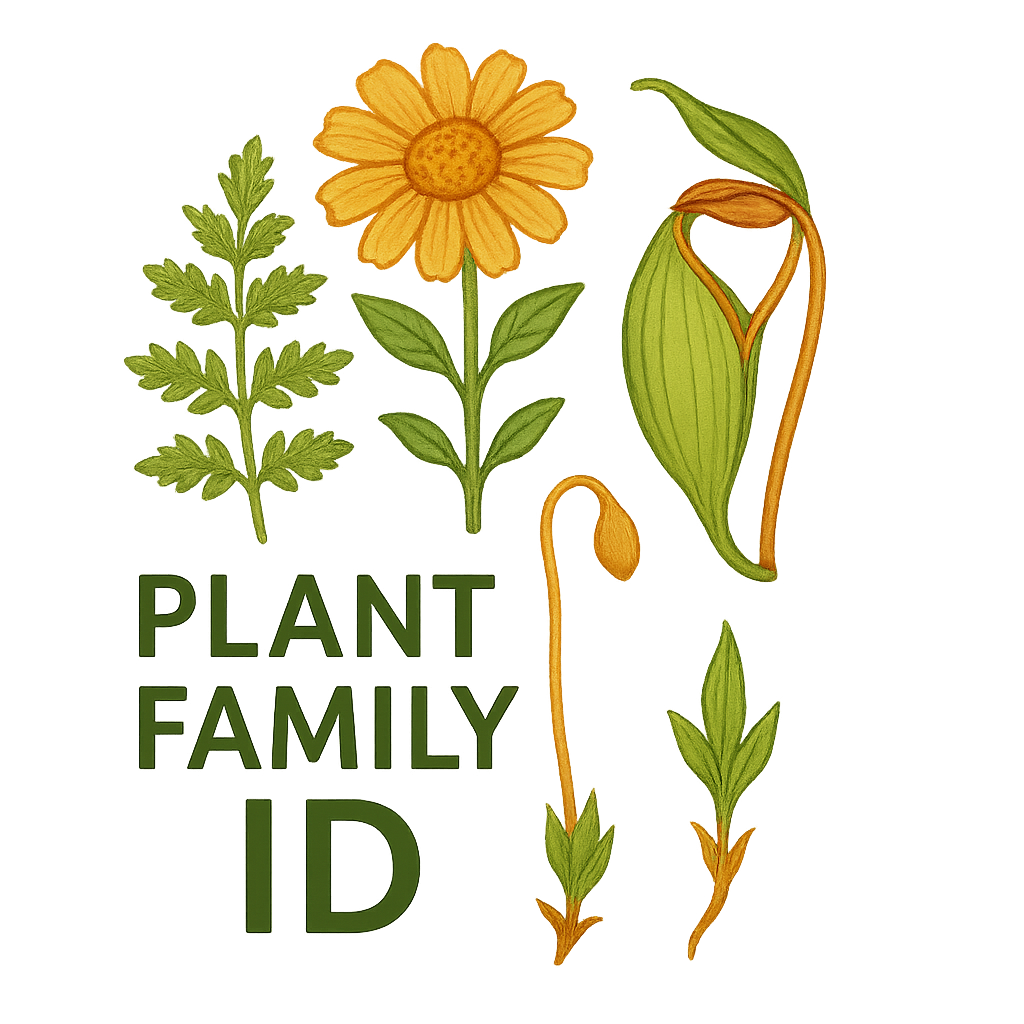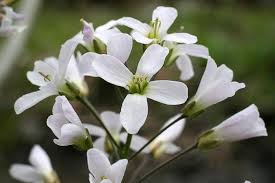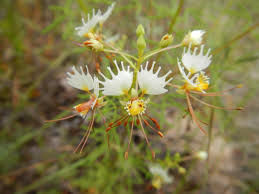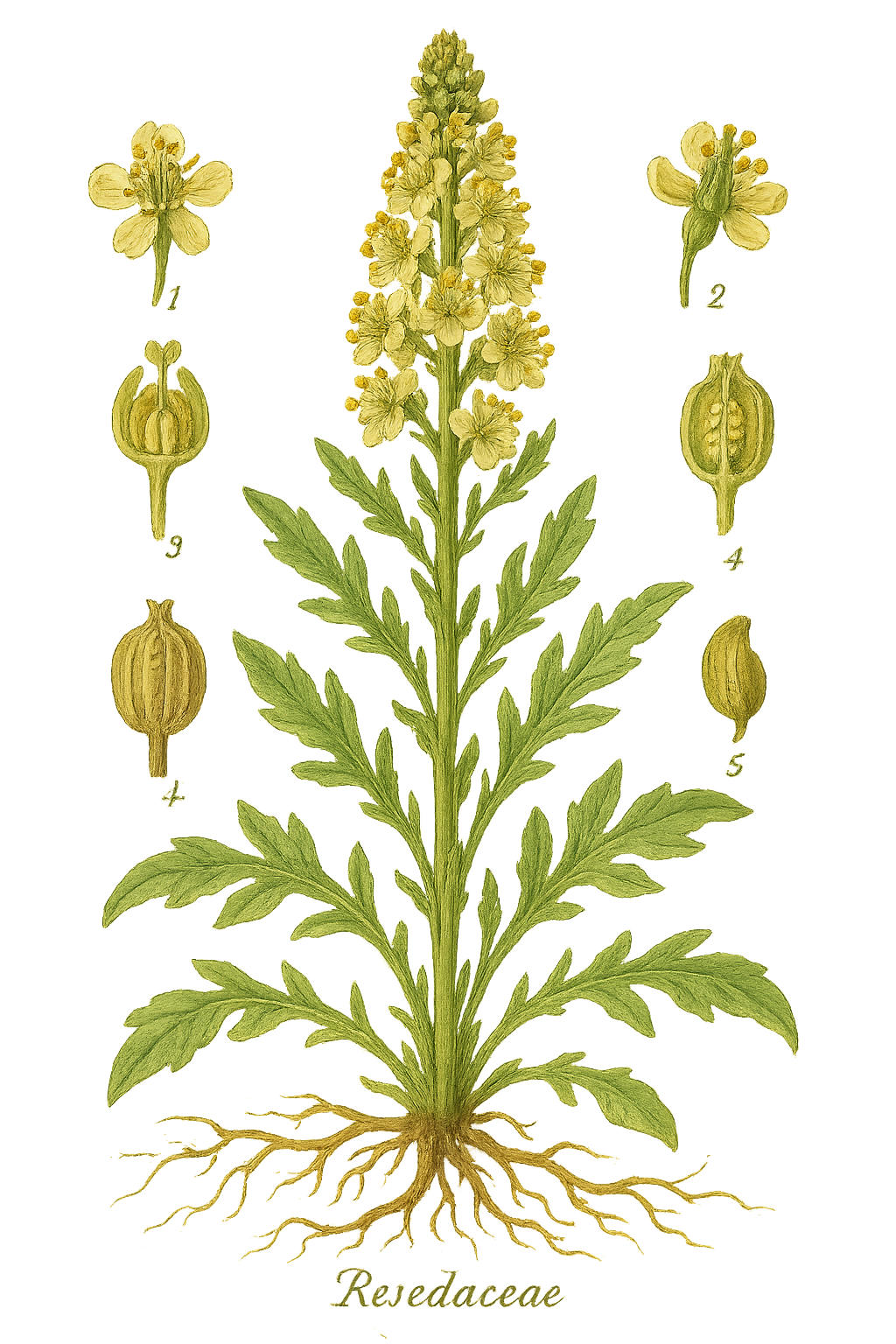Capparaceae
Caper Family
The Capparaceae, commonly known as the caper family, comprises herbs, shrubs, and small trees primarily found in tropical and subtropical regions. While relatively small compared to Asteraceae, it includes economically important species like the caper bush (Capparis spinosa) and is characterized by often showy flowers with numerous stamens. Its classification has been debated, particularly concerning its relationship with Brassicaceae and Cleomaceae.
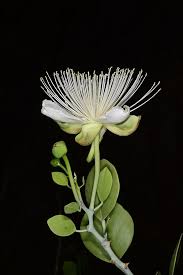
Overview
The Capparaceae family belongs to the order Brassicales, sharing characteristics like the production of glucosinolates (mustard oil glycosides) with related families like Brassicaceae (mustard family). Members are adapted to diverse, often arid or semi-arid, environments across the tropics and subtropics of the Old and New Worlds.
Plants in this family range from annual herbs to woody shrubs and lianas, or small trees. They often possess unique floral structures, including flowers with numerous, long, often colorful stamens and ovaries elevated on a stalk called a gynophore. This feature, along with petal number and leaf structure, helps distinguish them.
Economically, the most significant member is Capparis spinosa, the source of edible capers (pickled flower buds) and caperberries (fruits). Several species are used locally for traditional medicine, timber, or as ornamentals, though none have achieved the global economic importance of major crops in related families like Brassicaceae.
Quick Facts
- Scientific Name: Capparaceae
- Common Name: Caper family
- Number of Genera: Approximately 16 (Note: Taxonomy varies, especially regarding Cleomaceae)
- Number of Species: Approximately 450-500
- Distribution: Primarily tropical and subtropical regions worldwide
- Evolutionary Group: Eudicots - Rosids - Order Brassicales
Key Characteristics
Growth Form and Habit
Capparaceae members are diverse in habit, including annual or perennial herbs (e.g., some Cleome, though often placed in Cleomaceae now), shrubs (e.g., Capparis), lianas, and small trees. Many species are adapted to xeric (dry) conditions and may have features like deep taproots or drought-deciduous leaves. Stems can be herbaceous or woody, sometimes armed with stipular spines (spines originating from stipules at the base of the leaf petiole).
Leaves
Leaves are typically alternate, rarely opposite. They can be simple or palmately compound (with leaflets radiating from a single point). Stipules are usually present, sometimes small, but often modified into persistent spines, a key characteristic for identifying many species, especially in the genus Capparis.
Inflorescence
Flowers in Capparaceae can be solitary in leaf axils or arranged in terminal or axillary racemes, corymbs, or umbels. Unlike Asteraceae, they do not form composite heads (capitula). Bracts are often present at the base of the pedicels (flower stalks).
Flowers
Flowers are often showy, bisexual (usually), and typically actinomorphic (radially symmetrical) or slightly zygomorphic (bilaterally symmetrical). Key floral characteristics include:
- Sepals: Typically 4, distinct or slightly fused at the base.
- Petals: Typically 4, often clawed (with a narrow base), sometimes reduced or absent. Usually arranged in a cross-like pattern similar to Brassicaceae.
- Androecium: Stamens are often numerous (6 to many, sometimes hundreds), frequently long and exserted (protruding beyond the petals), contributing significantly to the flower's appearance. Filaments may be fused at the base or attached to the gynophore.
- Gynoecium: A superior ovary composed of 2 (sometimes more) fused carpels, typically containing numerous ovules. A defining feature is that the ovary is often borne on a distinct stalk called a gynophore (a stalk supporting the gynoecium) or an androgynophore (a stalk supporting both androecium and gynoecium). The style is usually short or absent, with a capitate (head-like) or simple stigma.
Fruits and Seeds
The fruit is typically a capsule (often elongated, like a silique in Brassicaceae, but derived from a stalked ovary) or a fleshy berry. The fruit itself is often stipitate (stalked) due to the persistent gynophore. Seeds are numerous, often kidney-shaped (reniform), and lack significant endosperm. Dispersal mechanisms vary, including dehiscence for capsules and animal consumption for berries.
Chemical Characteristics
Like many families in the Brassicales order, Capparaceae plants often produce glucosinolates (mustard oil glycosides). These compounds contribute to the pungent or bitter taste of some species (like capers) and serve as defense chemicals against herbivores and pathogens.
Field Identification
Identifying members of the Capparaceae family involves looking for a combination of floral, fruit, and vegetative features, particularly those distinguishing them from the closely related Brassicaceae and Cleomaceae.
Primary Identification Features
- Flowers with 4 Petals and Numerous Stamens: Look for flowers with typically 4 distinct petals (often clawed) and usually more than 6 stamens (often many and conspicuously long/exserted).
- Stalked Ovary (Gynophore): Check if the ovary (and resulting fruit) is elevated on a noticeable stalk (gynophore or androgynophore) above the point of petal and sepal attachment. This is a key feature.
- Fruit Type: Look for stipitate (stalked) capsules or berries.
- Stipular Spines: Check the base of the petioles for pairs of spines (common in Capparis and relatives).
- Palmately Compound Leaves: While not universal, the presence of palmately compound leaves is characteristic of some genera (e.g., Cleome).
Secondary Identification Features
- Leaf Arrangement: Usually alternate.
- Habit: Often shrubs or small trees, sometimes herbs, frequently in drier habitats.
- Mustard Oil Scent: Crushed leaves or stems may have a pungent scent due to glucosinolates (less consistently strong than in Brassicaceae).
- Flower Symmetry: Mostly radially symmetrical (actinomorphic) but can be slightly bilaterally symmetrical (zygomorphic).
Seasonal Identification Tips
- Flowering Season (Tropics/Subtropics): Often coincides with rainy seasons or periods of active growth, but some species flower in dry seasons. Showy flowers are the best diagnostic tool.
- Fruiting Season: The characteristic stalked capsules or berries can be identified after flowering.
- Dry Season/Winter: Persistent woody structure, stipular spines, and sometimes dried fruits can aid identification. Leaf form (simple vs. compound) is useful year-round if leaves are present.
Common Confusion Points
- Brassicaceae (Mustard Family): Also have 4 petals and are in Brassicales. However, Brassicaceae typically have exactly 6 stamens (4 long, 2 short - tetradynamous) and fruits (siliques or silicles) that are not usually borne on a prominent gynophore.
- Cleomaceae (Spider Flower Family): Very closely related and sometimes included within Capparaceae. Often distinguished by having flowers that are more distinctly zygomorphic, typically 6 stamens (though sometimes more), and fruits that are silique-like capsules but often dehisce differently or have a persistent replum (partition). Palmate leaves are common. The presence/absence of a prominent gynophore varies.
Field Guide Quick Reference
Look For:
- 4 petals
- Numerous (>6), often long stamens
- Ovary/fruit on a stalk (gynophore)
- Stipular spines (often present)
- Alternate leaves (simple or palmate)
- Capsule or berry fruit
Key Variations:
- Habit: Herb, shrub, tree, liana
- Leaves: Simple or palmately compound
- Stamen number: 6 to many
- Presence/absence of stipular spines
- Fruit: Elongated capsule vs. globose berry
Notable Examples
The Capparaceae family includes species known for culinary uses, traditional medicine, and as interesting components of tropical and arid ecosystems.

Capparis spinosa
Caper Bush
A perennial, sprawling, spiny shrub native to the Mediterranean and parts of Asia. It is famous for its flower buds (capers) and fruits (caperberries), which are pickled and used as a condiment. The flowers are attractive, with white to pinkish petals and numerous long violet stamens. It typically has rounded simple leaves and prominent stipular spines.

Cleome species (e.g., C. hassleriana)
Spider Flower
Often cultivated as ornamentals, Cleome species are typically annual herbs with palmately compound leaves and tall racemes of flowers. The flowers are known for their extremely long, exserted stamens and styles, resembling spider legs. Petals can be pink, purple, or white. Note: Most botanists now place Cleome and related genera in the separate family Cleomaceae due to molecular and morphological evidence.

Cadaba fruticosa
Indian Cadaba
A common shrub or small tree found in arid regions of Africa and Asia. It typically has simple, often clustered leaves and flowers with reduced or absent petals but prominent stamens and a long gynophore. The fruits are elongated capsules. Various parts are used in traditional medicine.

Maerua crassifolia
Desert Bush-Cherry
A drought-resistant shrub or small tree found in arid parts of Africa and the Middle East. It often has small, simple leaves and inconspicuous flowers that lack petals but have numerous stamens. The fruit is a berry-like, often constricted between the seeds. It is an important fodder plant in desert regions.
Phylogeny and Classification
Capparaceae belongs to the order Brassicales, within the rosid clade of eudicots. This order is characterized by the production of glucosinolates. Historically, Capparaceae was broadly defined and included groups now recognized as separate families, most notably Cleomaceae and sometimes parts of Brassicaceae.
Molecular phylogenetic studies have shown that Capparaceae, as traditionally defined, was paraphyletic. Brassicaceae is nested within the broader Capparaceae clade. To resolve this, Capparaceae is now often treated in a stricter sense (sensu stricto), comprising mainly Capparis and related genera, while Cleomaceae is recognized as a distinct sister family to Brassicaceae. The relationships highlight a rapid radiation within the core Brassicales.
Position in Plant Phylogeny
- Kingdom: Plantae
- Clade: Angiosperms (Flowering plants)
- Clade: Eudicots
- Clade: Rosids
- Order: Brassicales
- Family: Capparaceae
Evolutionary Significance
The Capparaceae family, within the context of Brassicales, showcases evolutionary trends related to:
- Adaptation to Arid Environments: Many species exhibit features like succulence, spines, and deep root systems suited to dry climates.
- Floral Diversification: Variations in stamen number, presence/absence of petals, and the development of the gynophore reflect diverse pollination strategies.
- Chemical Defenses: The production of glucosinolates is a key synapomorphy (shared derived trait) of the Brassicales, playing a crucial role in plant-herbivore interactions.
- Taxonomic Complexity: The Capparaceae/Cleomaceae/Brassicaceae complex illustrates the challenges and insights gained from integrating molecular data with morphology to understand plant relationships and evolutionary history.
